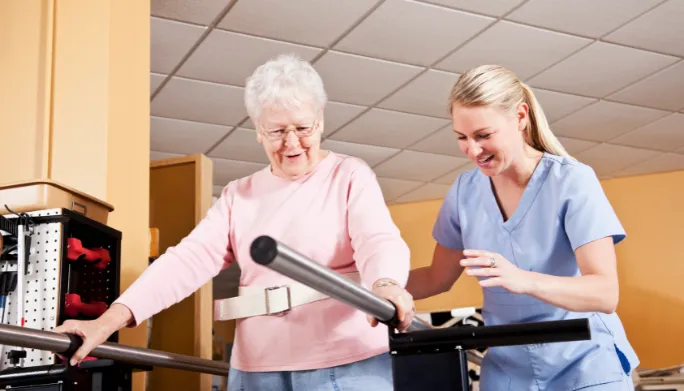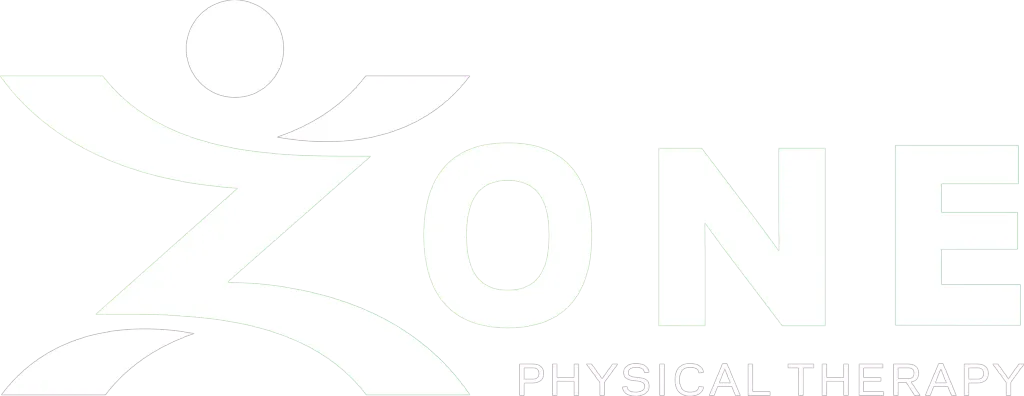Zone Physical Therapy
Balance and Gait Disorders in Greer, SC
Have you noticed yourself feeling increasingly unsteady on your feet lately? Do you feel like you’re losing your balance more easily or have trouble walking efficiently? Balance and gait issues can arise for many reasons—from inner ear problems to muscle weakness to neurological conditions—greatly impacting daily functioning. The physical therapists at Zone Physical Therapy in Greer, SC specialize in treating balance and gait disorders. We are experts in designing customized exercise programs that target the specific reasons you are struggling with stability, walking smoothly, or experiencing frequent falls. Our proven approaches help people of all ages regain strength, retrain their balance systems, optimize their walking patterns, and prevent future falls.

Who Gets Balance and Gait Disorders in Greer?
These frustrating and dangerous issues can affect people of any age, but athletes or former athletes between 18-55 pursuing active lifestyles are especially susceptible. Causes range from:
- Lingering effects of sports concussions
- Chronic ankle instability
- Early onset muscle loss
- Inner ear dysfunction
- Neurological conditions like multiple sclerosis
Symptoms involve feeling off-balance, uncoordinated walking, trouble standing on one foot, and unexpected falls. Without treatment, symptoms often progressively worsen over time, leading to limited mobility and independence. The good news? With customized physical therapy we can identify the underlying causes of your stability and gait problems and design targeted, progressive exercise programs to help you regain balance and optimal walking mechanics.
A Multifactorial Approach to Improving Balance and Gait in Greer, SC
At Zone Physical Therapy , we never take a one-size-fits-all approach. We perform thorough evaluations to pinpoint the specific factors contributing to your balance and walking difficulties. Common reasons include:
- Muscle weakness/imbalances – Certain muscles important for stability become weak or imbalanced. We identify these deficiencies and improve them.
- Vestibular dysfunction – Your inner ear balance systems aren’t working properly. We retrain them through specific exercises.
- Abnormal walking patterns – Suboptimal walking mechanics undermine efficiency. We optimize your gait.
- Vision/somatosensory issues – Other sensory systems affecting balance need improvement. We address these.
- Environmental risks – Hazards in your home or work increase fall risks. We modify these risks.
With an understanding of what’s not working properly, we design a personalized treatment plan targeting your balance from multiple angles.
Regaining Balance and Mobility Step-by-Step
Custom exercises and activities we frequently utilize include:
1. Strength and Balance Training
- Core, leg, and ankle strengthening
- Proprioceptive exercises on unstable surfaces
- Dynamic standing balance challenges
- Perturbation training to improve reactions
2. Vestibular Rehabilitation
- Head movement exercises
- Gaze stabilization training
- Balance challenges on foam, pillows, etc.
3. Gait Retraining
- Treadmill analysis of step length, stride mechanics
- Rhythmic stabilization during walking
- Obstacle courses
4. Fall Prevention Education
- Home safety evaluation and modifications
- Appropriate assistive device recommendations
- Safe walking strategies and techniques
Through this comprehensive approach, you rebuild stability and gait from the ground up, reducing the risk of falls and restoring mobility confidence so you can get back to enjoying the active life you want.
Better Balance and Walking Leads to Improved Health and Wellness
Difficulty balancing and walking smoothly significantly threatens health, mobility, and independence long-term. Our treatment goals focus on optimizing all aspects of balance and gait to prevent future issues and falls while achieving wider wellness benefits like:
- Increased strength and bone density
- Reduced fall-related injuries
- Improved mobility and range of motion
- Higher activity levels and cardiovascular health
- Reduced risk of depression/social isolation
- Greater participation in work, social, and recreational activities
- More independence in home, community, and when traveling
Regaining proper stability, coordination, and ease of movement delivers immense quality-of-life rewards now and for years to come.
Frequently Asked Questions About Balance and Gait Rehabilitation
Wondering if physical therapy is right for you? Here are answers to some common questions we get about improving balance and gait function:
What neurological disorders cause gait problems?
Parkinson’s disease, strokes, multiple sclerosis, and conditions causing neuropathy frequently contribute to gait abnormalities and instability. Physical therapists often work alongside neurologists to improve symptoms from neurological conditions.
What is the most common gait disorder?
Ataxic gait—uncoordinated, unsteady, wide-based walking—is most frequently seen across age groups and medical conditions. Specific retraining of stability, weight shifts, and foot placement can markedly improve coordination.
Why am I unsteady when I walk?
Like balance itself, ease of walking relies on multiple factors working seamlessly together—strength, flexibility, sensory systems, etc. Dysfunction in any part of this system will undermine smooth gait. Our in-depth evaluations find the weak links causing unsteadiness.
What are the types of gait?
From slow, shuffling Parkinsonian gaits to unpredictable ataxic gaits to stiff, limited patterns—there are many variations connected to underlying biomechanical or neurological causes. Correctly categorizing your gait informs customized treatment plans.
How long will it take to improve my balance and walking?
Most patients see gradual improvements in stability, coordination, ease of walking, and reduction in falls within 4-6 weeks. But long-term neuromuscular retraining often requires 3-6 months for more lasting mobility benefits as the body adapts muscle-wise and movement-wise.
Restore Balance, Coordination, and Confidence
Regaining your strongest, steadiest, and smoothest walking patterns requires targeted, progressive exercise therapy tailored to your situation. At Zone Physical Therapy our balance and gait rehabilitation specialists have years of advanced training and experience helping people just like you. We provide personalized care, closely tracking your progress and modifying your program to help you achieve your mobility goals whether that involves confident walking, stair climbing, running, returning to sports, or living independently without falling worries.
Call today to schedule a full physical therapy evaluation identifying your specific balance and gait limitations and designing a tailored treatment plan to have you moving steadily and freely once again.
About The Author
Dr. Scott Kaylor, a Co-founder, Physical Therapist specializing in Physical Therapy, Sports Injuries, and IASTM, puts patients at the forefront of their care. With years of experience, they guide individuals toward achieving their best selves. At Zone Physical Therapy in Greer, SC, Dr. Scott Kaylor crafts individualized plans using cutting-edge techniques, empowering patients to overcome limitations and thrive.


